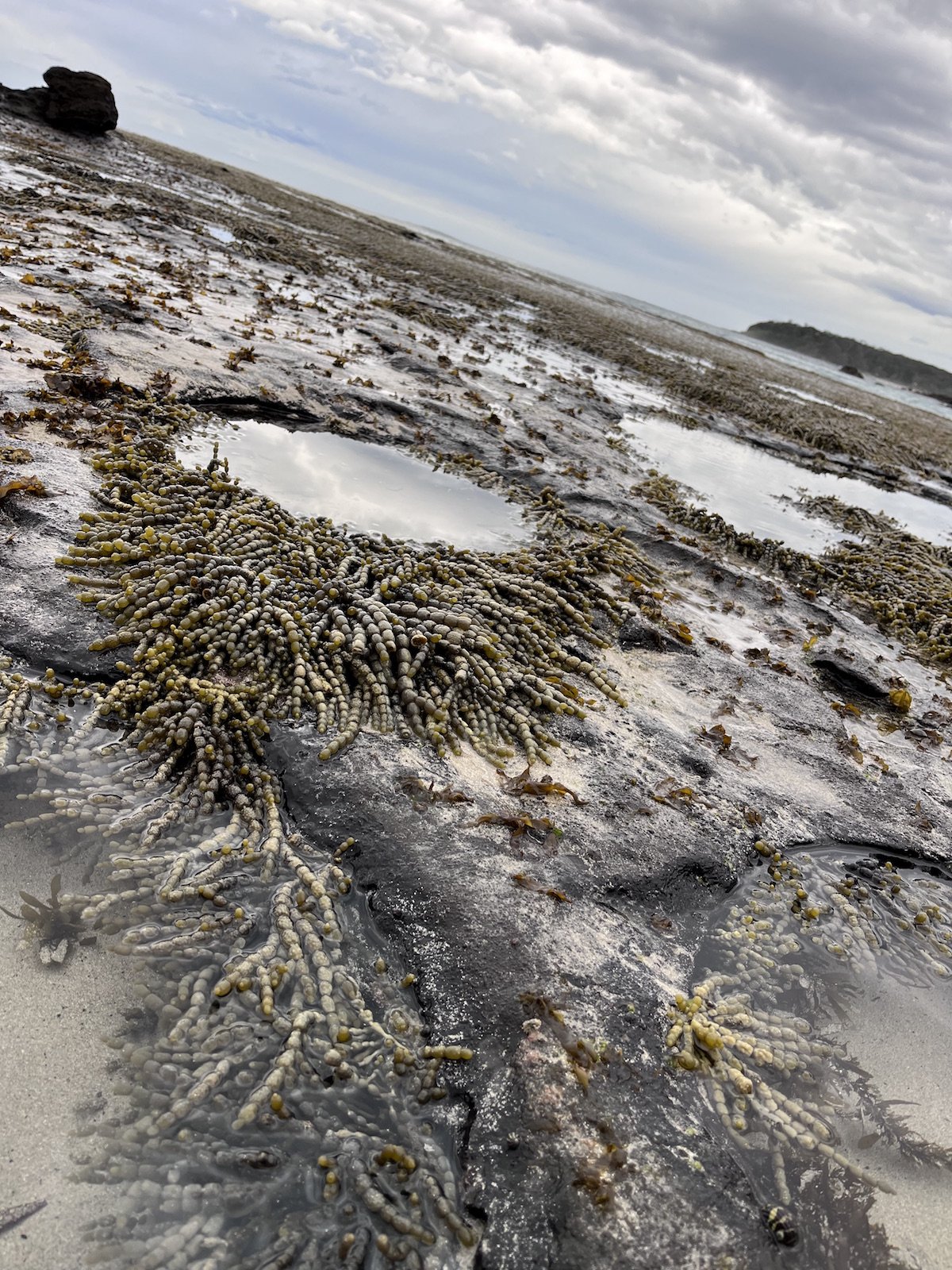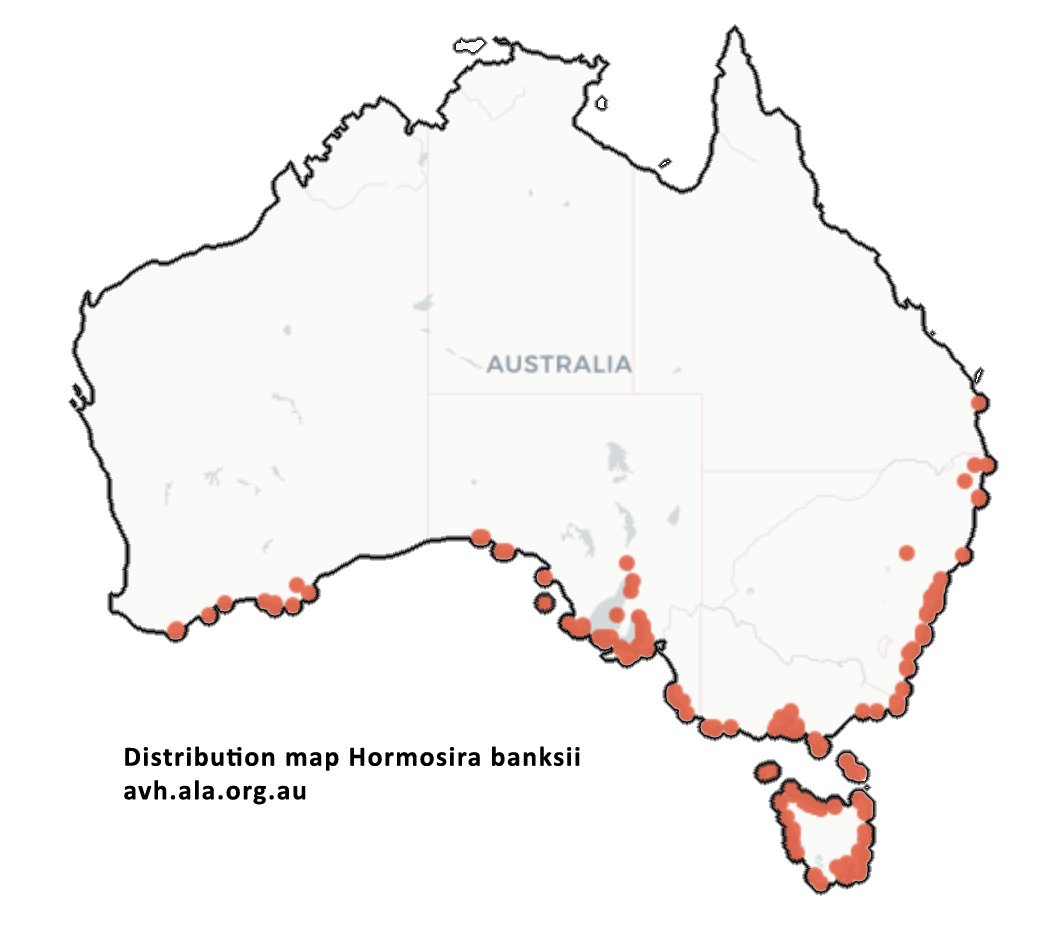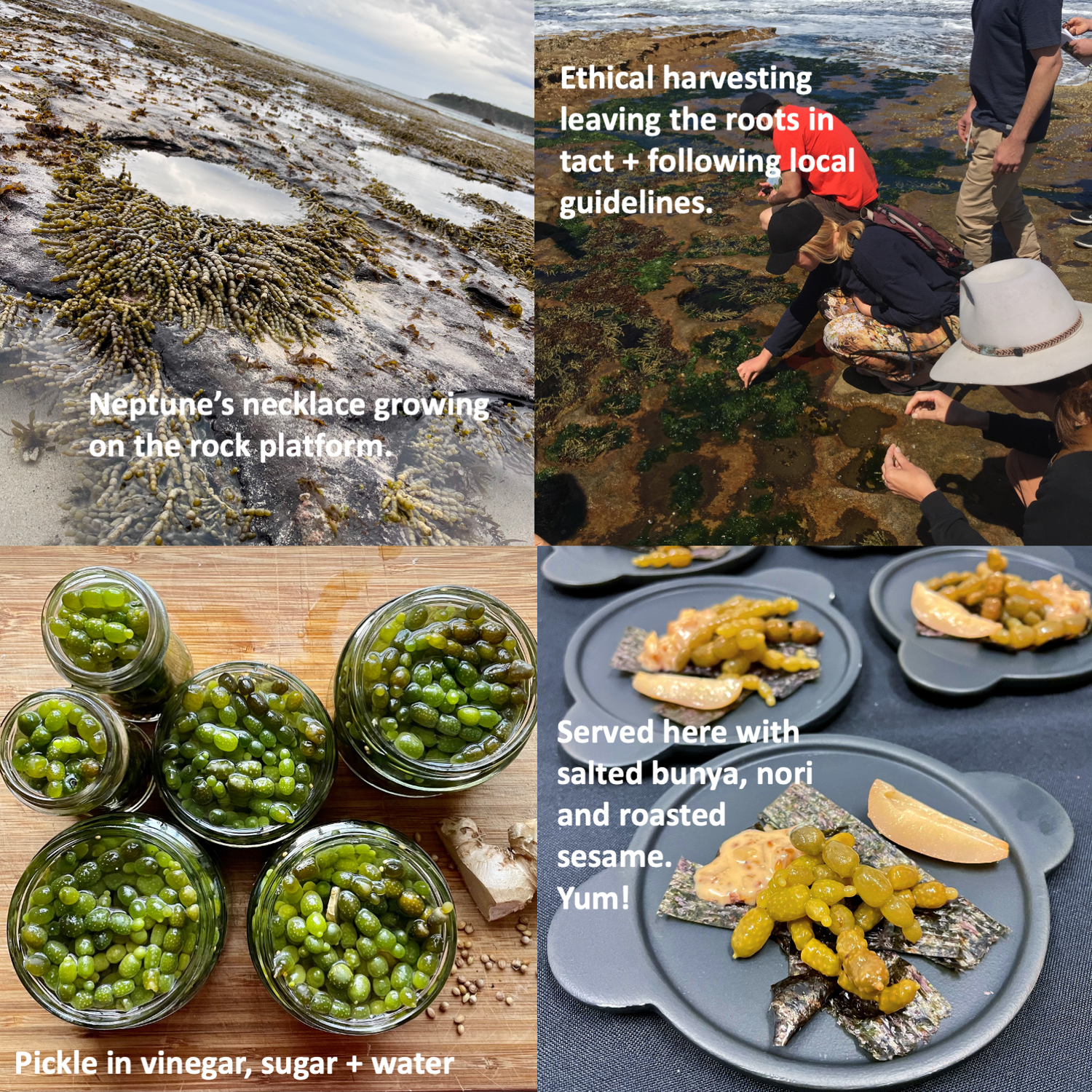How to harvest and eat Neptune's necklace - Sea olives for summer snacks
Neptune pearls -Hormosira banksii - can be found on rock platforms at low tide.
Neptune’s necklace
Hormosira banksii
If you spent much time at the beach as a kid in Australia, I’m sure you had the experience of finding little beaded seaweeds on the rocky outcrops, and you used them to flick one another as ammunition in battle games. Do you know that they are also edible?
Neptune’s pearls or Neptune’s necklace is a common brown seaweed found in rockpools and rock platforms in many Australian states ( see map below). It grows abundantly from the south of Port Macquarie, New South Wales, all the way down and around to Western Australia. This seaweed lives in the intertidal zone, the space between high and low tide marks, and at times forms big mats which create an important microhabitat for small crustaceans, molluscs, sea worms and fish, who eat this seaweed or use it to shelter in. It is common to see dislodged fronds floating in the water.
How to ID Neptune’s pearls
Neptune’s necklace or Neptune’s pearls feature green-brown fronds that resemble strings of beads held together by short, thin segments of a stalk. The strings of ‘pearls’ radiate from a central holdfast and can grow to a length of 30 centimetres. The hollow, round or oval-shaped vesicles are up to 1.5 centimetres in diameter and filled with water. The presence of water in the pearls prevents the seaweed from drying out when it’s out of the water. The pearls are light green to dark brown and usually blemished by little clumps and irregularities; they are often slimy, another way of preserving moisture when they are exposed to the sun. There are a great variety of sizes of those beads and current research has proven that they all are the same species, growing to different sizes according to conditions.
How to eat Neptune pearls
I eat the beads raw when they are fresh and crunchy. To me, they resemble brined olives in taste and texture. The burst of salty water inside each bead gives it a distinctive flavour of the sea. But, if you want to impress your guests for Christmas, with the addition of seaweeds on the cheese platter, Neptune’s pearls make for an excellent and surprising pickle to gift. See below for a recipe.
Neptune’s pearls will deteriorate quite quickly once picked; hence this seaweed should be eaten or processed on the same day it is harvested. If you must, refrigeration in brine will assist in keeping it a bit longer: quite simply, collect a bucket of seawater to refrigerate the seaweed in.
Seaside legalities and ethics
The specifics of coastal ecology regulations change from state to state. You also need to be aware that legislations change and the boundaries of protected areas shift. The range of permission varies from being completely unregulated outside of marine reserves or national parks; to a clearly defined limit for personal use; to the need for a harvester’s licence.
Please consult with your local council with regard to your current regulations. As a general rule, never pull seaweeds from their ‘holdfast’. The holdfast is the root-like structure at the base of seaweeds that anchors them to a stable surface, such as rock, or the seabed (seaweeds do not have a root system, as they take up nutrients from seawater through their fronds). Instead, harvest by cutting, leaving behind the holdfast so that the seaweed can regenerate – or better still, collect seaweed when it has washed ashore.
Please note that seaweeds are important not only when they are alive in the water, but also when they are decaying on the beach. They are a vital element in marine ecosystems, existing at the lower level of the food web. Fish, birds, snails, crabs and marine mammals use kelp beds for food, refuge or spawning, or as nursery grounds.
Kelp beds also trap and stabilise sediment, and disperse wave energy and turbulence, in this way protecting beaches from erosion. For this reason, it is advisable that you do not harvest seaweed from the sea, but rather wait for it to float freely.
Finally, please be aware that it is best not to harvest from the beach straight after a storm. Particularly in built-up environments, storm channels will carry to shore, the debris of the city, polluting the water and everything in it.
Seaweed pickle recipe -By Marnee Fox
Prep: 45 minutes
Storage: Last up to 1 year in sealed jars in a cool dry place away from sunlight or up to 4 weeks opened in the fridge
Makes: 4 x 250ml jars
Ingredients:
1kg of Neptune's Necklace
2 cups white wine vinegar
1 cup fine castor sugar
2 cups water
1 slice of fresh ginger
1 tsp of coriander seeds
1 tsp of wild peppercorn berries
1 tsp of mustard seeds
Method
Sterilizing jars: You will need to sterilize your jars first by washing them well with soapy water, placing them in a cold oven and heating to 110’C. When the oven reaches 110 leave the jars to heat for 10 minutes or until completely dry.
Sterilize four 250ml or two 500ml pickling jars.
Thoroughly rinse your Neptune's necklace in fresh water to remove any sand or minute stowaways. Set them aside in a bowl.
Place your sliced ginger and pickling spice in each jar then pack in the seaweed.
Combine the vinegar, sugar and water in a saucepan over low heat. Stir until the sugar dissolves then increase the heat and bring to a boil. Once boiling remove from the heat.
Fill each jar with the hot vinegar liquid, completely covering the seaweed. Let them stand for a few minutes. The liquid should rest 1-2cm from the rim and fully cover the seaweed. You may want to top up the liquid if need be. Your Neptune's necklace should have turned a brighter green by this stage.
To make sure your jars are well sealed, turn upside down while still warm for a few minutes.
Use pickled Neptune's necklace as you would any other pickle. Serve with cheese, roast veggies or as we do with an Asian-style roast sesame dressing. YUM!
Further research
Atlas of Living Australia - Distribution map of Neptune necklace
Wikipedia - On Neptune’s necklace
Springer Link - Scientific paper reporting on the antiinflammatory properties of Neptune’s necklace
Auckland University - Research paper investigating the economic possibilities of Neptune’s necklace for crop diversification
Science Direct - A series of abstracts of scientific papers investigating various aspects of Neptune’s necklace biology and uses.








